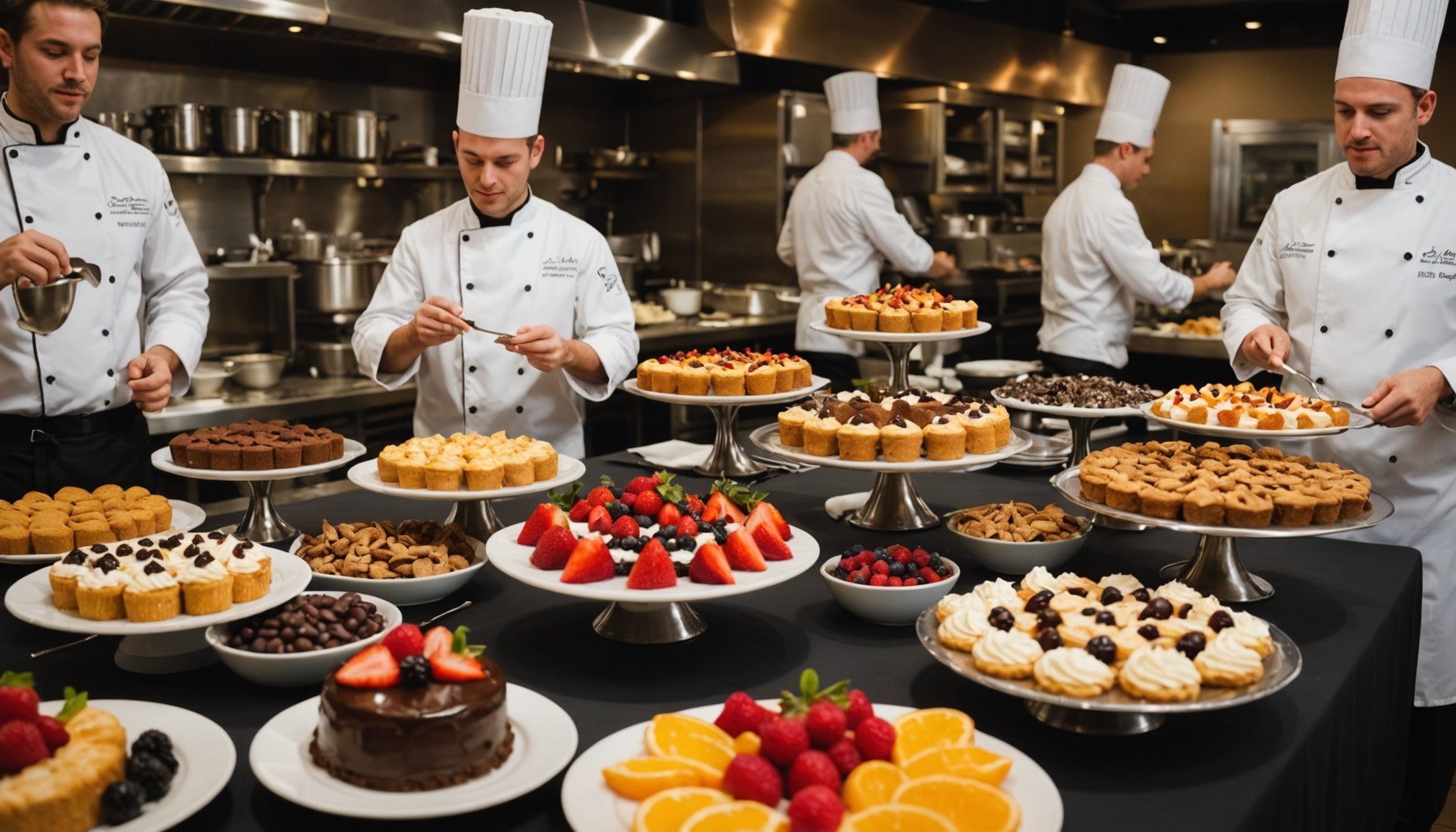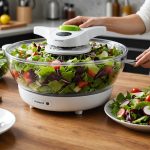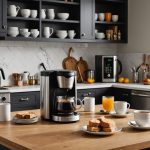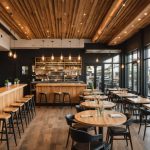Essential Equipment Overview
A well-stocked dessert station is the backbone of any restaurant’s sweet offerings. The importance of a well-equipped dessert station cannot be overstated, as it directly influences customer experience and satisfaction levels. A dessert station brimming with essential dessert equipment streamlines operations and enables chefs to craft exquisite treats efficiently.
At the heart of this setup are restaurant dessert station essentials. Key equipment includes mixers, blenders, and precise measuring tools, which are vital for creating consistent, delicious desserts. Additionally, specialised ovens and freezers ensure desserts maintain their intended texture and flavour. The presence of refrigerated storage units keeps ingredients fresh, preserving the tantalising appeal of each creation.
Have you seen this : Key considerations for designing a sustainable restaurant: a guide to eco-friendly spaces
The incorporation of essential dessert equipment enhances the workflow, allowing for swift transitions between preparation stages. This efficiency is crucial, especially during peak service times, where delays can detract from the dining experience. Prioritising high-calibre equipment aligns with the restaurant’s commitment to quality, leaving patrons satisfied and returning. Carefully chosen equipment not only supports operational efficiency but also elevates the artistic presentation of desserts, contributing to a memorable dining experience.
Display and Presentation Tools
In the realm of desserts, creating an unforgettable visual impression is paramount. This section delves into the importance of dessert display solutions and presentation tools, focusing on how they enhance the allure of culinary creations.
Also to discover : Essential tips for selecting the best premium meat supplier for your steakhouse
Display Cases
Display cases are indispensable for showcasing desserts with style. They ensure visibility and accessibility, crucial for enticing customers. Factors to consider when selecting display cases include: ensuring optimal temperature settings to maintain freshness, and clear visibility to highlight the craftsmanship of your culinary offerings.
Dessert Stands
Dessert stands elevate the presentation, adding a touch of elegance to the display. They offer versatility in arranging various dessert types, allowing for eye-catching, tiered presentations. Available in different materials like glass, metal, or wood, dessert stands can be tailored to complement the restaurant’s aesthetic.
Presentation Plates
Presentation plates play a critical role in enhancing the visual appeal of desserts. A well-chosen plate not only complements the dessert’s colour and texture but also provides a canvas for creative plating techniques. Consider size, shape, and colour to align with the overall dessert display solutions, ensuring a coherent and appealing presentation.
Effective presentation tools are integral, enhancing not only the visual impact but also enriching the entire dining experience.
Serving Utensils and Accessories
A dessert station thrives with the right combination of dessert serving tools. Selecting versatile and functional utensils is crucial, as they cater to various dessert types and enhance the presentation’s finesse. For instance, an ice cream scoop with a release lever eases serving creamy, round scoops, ensuring consistency. For more delicate pastries, using tongs provides control and maintains the dessert’s integrity.
The quality of kitchen utensils for desserts directly impacts the dining experience. Well-crafted tools ensure precise serving, avoiding unnecessary mess and preserving the dessert’s aesthetic appeal. Stainless steel or silicone utensils, known for their durability and ease of cleaning, are highly recommended.
To elevate service efficiency, consider accessories such as garnish tools and piping bags. These accessories enable intricate designs and decorations, adding a distinctive touch to dessert offerings. Additionally, sugar sifters and chocolate shavers introduce new dimensions, enriching the dining experience.
In the world of desserts, the synergy between utensils and presentation tools sets the stage for unforgettable culinary creations. Properly chosen, well-maintained tools contribute significantly to the overall satisfaction of patrons, underscoring the importance of investing in high-quality dessert serving tools.
Storage Solutions for Desserts
Implementing effective dessert storage options is vital in maintaining the freshness and quality of both fresh and prepared sweet creations. An essential component of this storage is refrigeration for desserts, ensuring optimal temperature control, which prevents spoilage and preserves flavours.
Types of Storage Equipment
- Refrigerated Storage Units: Critical for perishable dessert ingredients, keeping them at the correct temperature to extend shelf life.
- Freezers: Ideal for preserving desserts that can be served frozen or require a long-term storage solution.
Temperature control plays a pivotal role in preventing the growth of harmful bacteria, and maintaining the hygiene standards required in food preparation areas. Setting the right temperatures is vital for ensuring the safety of both the kitchen staff and patrons.
Best Practices
Organising dessert inventory efficiently involves strategic placement of items based on their use frequency, ensuring quick access during peak times. Adequate labelling practices help in identifying ingredients promptly, reducing service delays and enhancing dessert station efficiency. Adhering to these practices not only safeguards the quality of desserts but also plays a significant role in streamlining kitchen workflow.
Workflow Optimization
Streamlining kitchen workflow can significantly enhance dessert station efficiency, promoting a seamless culinary experience. Proper layout design is a critical component. By strategically positioning equipment and tools, chefs can reduce unnecessary movement, which saves time and energy. This thoughtful arrangement fosters swift transitions between preparation stages, ensuring delicious desserts are delivered promptly.
A focus on dessert station efficiency begins with assessing the station’s flow. Ensuring that high-traffic areas are clear of obstacles and that essential dessert equipment is within easy reach will expedite the preparation process. Essential equipment, such as mixers and ovens, should be positioned near each other to minimise movement and optimise workflow.
Incorporating tools that assist in task transitions is equally important. Invest in multi-functional devices that can handle various preparation stages, from mixing to baking and finishing. These tools not only expedite operations but also maintain consistency in dessert quality. Workflow improvements should focus on reducing lag times during service, allowing chefs to focus on crafting each dish to perfection.
Ultimately, a well-designed layout supports team collaboration, increases productivity, and enhances the overall quality of the dining experience, leaving customers satisfied and more likely to return.
Cost Considerations
When setting up a dessert station, it’s crucial to balance the initial investment and long-term value. Budgeting for dessert equipment is the first step towards a cost-effective operation. High-quality equipment often shows a more substantial initial cost. However, the durability and efficiency of these options usually result in better long-term savings compared to budget alternatives prone to frequent repairs or replacements.
To ensure a smart investment, consider what type of dessert equipment meets your primary needs effectively. For instance, investing in a versatile mixer may save more in the long run than purchasing multiple specialized machines. Additionally, exploring dual-purpose tools can optimize costs by reducing the number of devices needed, ultimately freeing up space and streamlining operations.
Cost-saving strategies, such as purchasing refurbished or gently used equipment, can also provide value without compromising quality. Regular maintenance and proper care of existing equipment extend its lifespan, further bolstering the station’s efficiency and reliability.
Finally, consider potential volume discounts from suppliers when ordering essential equipment in bulk. Thoughtful planning and prioritizing the purchase of materials based on their potential return on investment helps to craft a financially sustainable dessert station that supports high-quality service.
Case Studies and Visual Inspiration
Examining dessert station examples in successful restaurants reveals valuable insights into creating effective setups. These examples highlight the importance of thoughtful design and functionality, inspiring culinary professionals to optimise their own stations. They provide real-world lessons, showing that strategic arrangements can drastically improve workflow and overall efficiency.
One notable case is a renowned patisserie that transformed their dessert station by prioritising space-saving equipment. By incorporating multi-functional tools, such as combination mixers with built-in blenders, the patisserie maximised their limited space. This successful dessert setup led to a notable increase in productivity, enabling faster service times and enhancing customer satisfaction.
Visual elements play a crucial role in inspiring design. Incorporating sleek equipment and organised layouts, as seen in upscale establishments, offers a blueprint for elevating both efficiency and aesthetic appeal. Photographs of completed stations serve as inspiration for chefs and restaurateurs, aiding in conceptualising their dessert areas.
These lessons learned from real-world setups stress the significance of a well-planned dessert station. By drawing inspiration from these successful examples, restaurants can create inviting, efficient spaces that not only meet operational needs but also enhance the customer experience.











